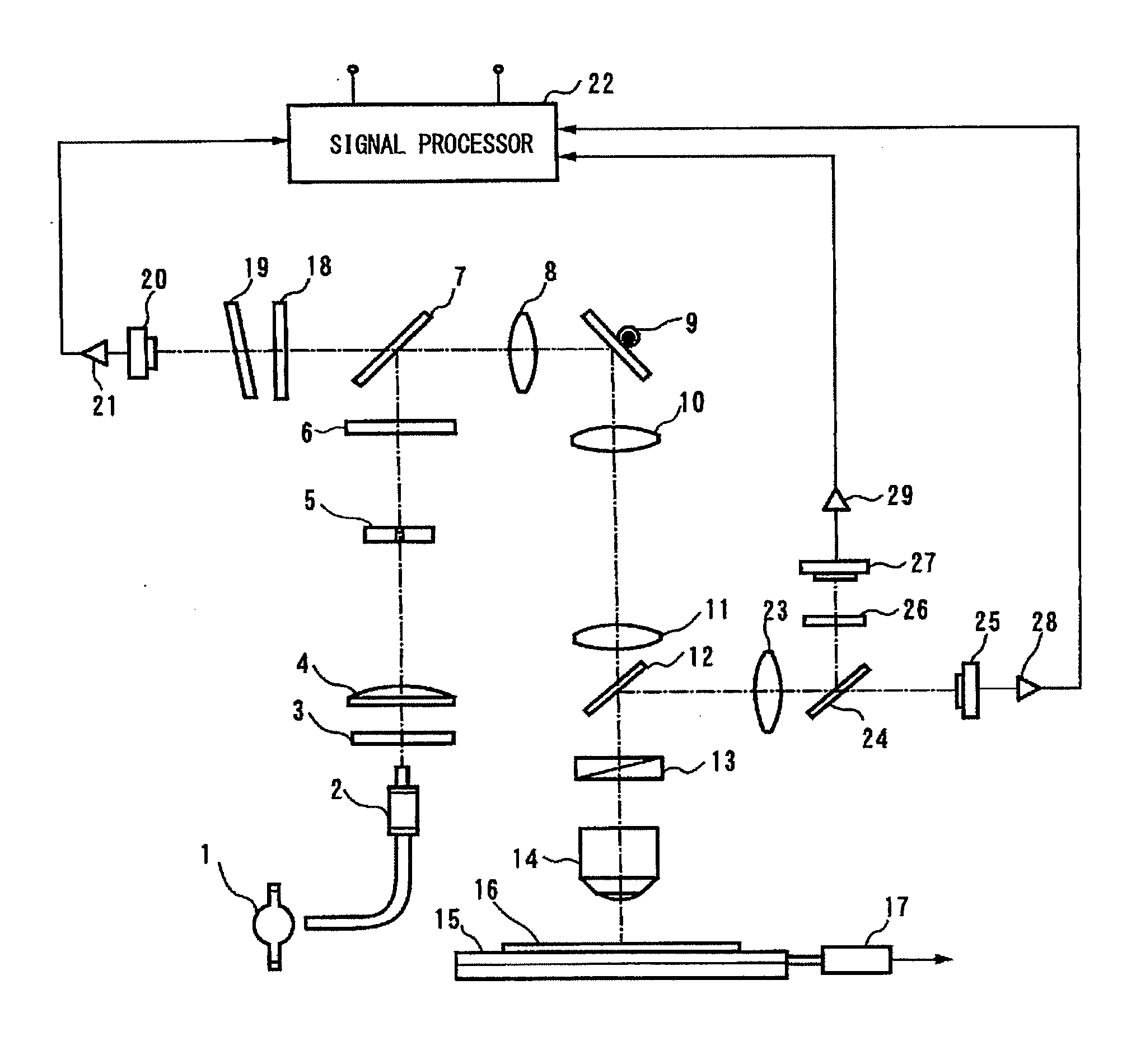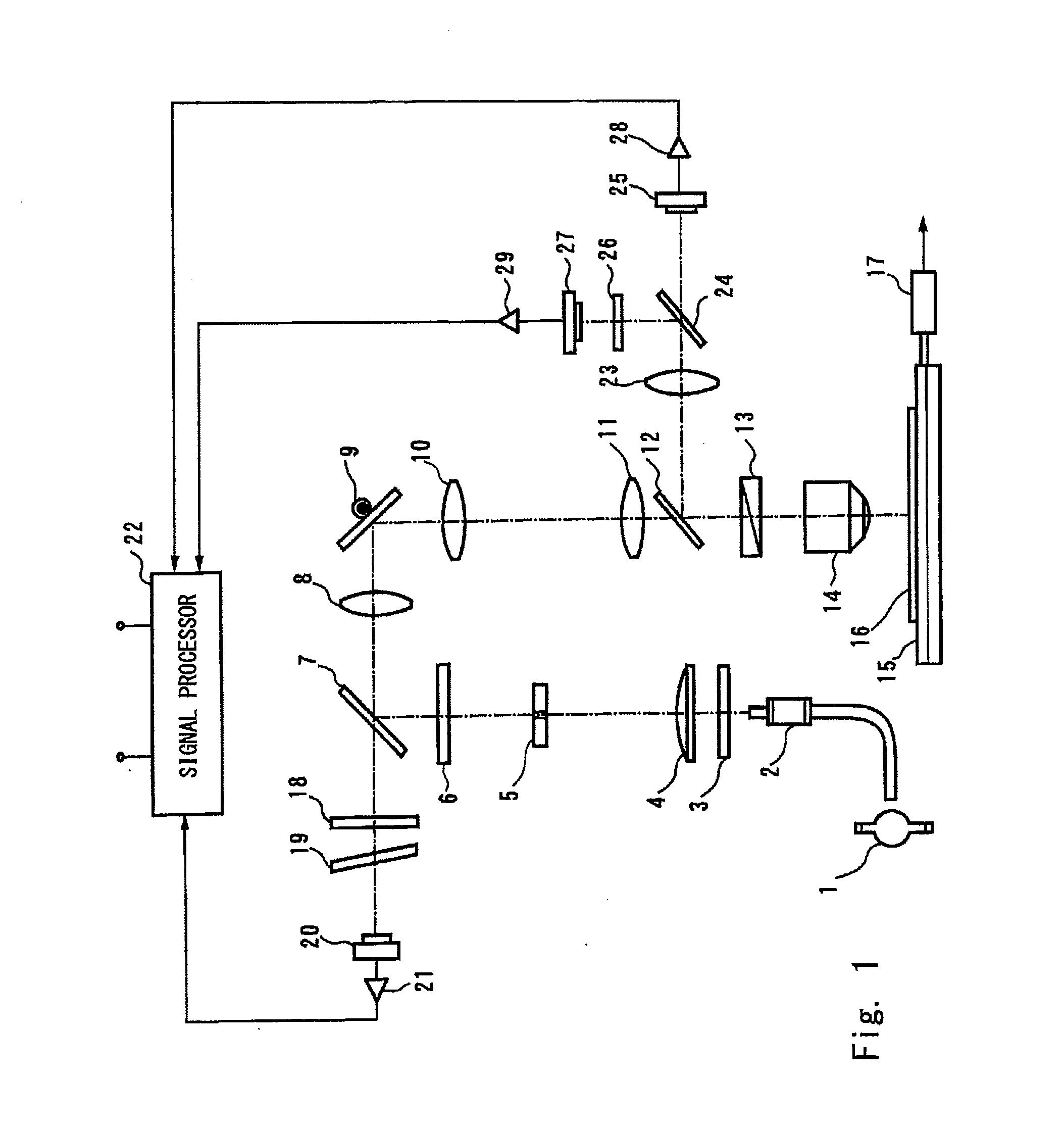Defect classifying method and inspection apparatus
a technology of inspection apparatus and classification method, which is applied in the direction of optical radiation measurement, instruments, spectrometry/spectrophotometry/monochromators, etc., can solve the problem that the inspection apparatus cannot clearly detect the dislocation of the basal plane, the device characteristics change, and the performance of the element performance. problem, to achieve the effect of improving the classification accuracy
- Summary
- Abstract
- Description
- Claims
- Application Information
AI Technical Summary
Benefits of technology
Problems solved by technology
Method used
Image
Examples
first modified example
[0075]FIG. 5 is a diagram showing a first modified example of the inspection apparatus according to the present invention. The components of the first modified example identical to those shown in FIG. 1 are denoted by the same reference numerals, and the description thereof is omitted. In this example, a first illumination system that forms a reflection image and a second illumination system that forms a photoluminescence image are used. In the first illumination system, the surface of the substrate is scanned with the illumination beam of the visible region. In the second illumination system, the surface of the substrate is scanned with the illumination beam of the ultraviolet region. The first and second illumination beams are illuminated at the same location on the silicon carbide substrate 16.
[0076]The reflected light inspection is performed by using a mercury lamp 50 as the illumination light source and by using the visible light having a wavelength of 546 nm and emitted from t...
second modified example
[0083]FIG. 6 shows a second modified example of the inspection apparatus according to the present invention. In this example, an illumination beam is obliquely projected on the surface of the silicon carbide substrate 16. A reflection image, a scattered light image, and a photoluminescence image are individually captured. The inspection apparatus detects defect images from these images. The inspection apparatus classifies each defect based on the defect image of the photoluminescence image and the defect image of the reflection image. Further, the inspection apparatus classifies each defect based on the defect image of the photoluminescence image and the defect image of the scattered light image. These images are associated with each other by using address information on each of the detected defect images.
[0084]A laser light source 70 that emits illumination light of the ultraviolet region is used as the illumination light source. The illumination beam emitted from the laser light s...
third modified example
[0088]FIG. 7 shows a third modified example of the inspection apparatus according to the present invention. In this example, an objective mirror is used instead of the objective lens. Scattered light and photoluminescence light, which are emitted from the silicon carbide substrate 74, are detected through the objective mirror. Defects are detected using a scattered light image and a photoluminescence image, and the detected defects are classified. The components of the third modified example identical to those shown in FIG. 6 are denoted by the same reference numerals, and the description thereof is omitted. A laser light source 90 that emits illumination light of the ultraviolet region is used as the illumination light source. The illumination beam emitted from the laser light source 90 passes through a polarizer 91 and is converted into a convergent beam by a lens 92. The illumination beam emitted from the lens 92 is obliquely projected toward the silicon carbide substrate 74. The...
PUM
| Property | Measurement | Unit |
|---|---|---|
| wavelength | aaaaa | aaaaa |
| band-edge emission wavelength | aaaaa | aaaaa |
| band-edge emission wavelength | aaaaa | aaaaa |
Abstract
Description
Claims
Application Information
 Login to View More
Login to View More - R&D
- Intellectual Property
- Life Sciences
- Materials
- Tech Scout
- Unparalleled Data Quality
- Higher Quality Content
- 60% Fewer Hallucinations
Browse by: Latest US Patents, China's latest patents, Technical Efficacy Thesaurus, Application Domain, Technology Topic, Popular Technical Reports.
© 2025 PatSnap. All rights reserved.Legal|Privacy policy|Modern Slavery Act Transparency Statement|Sitemap|About US| Contact US: help@patsnap.com



